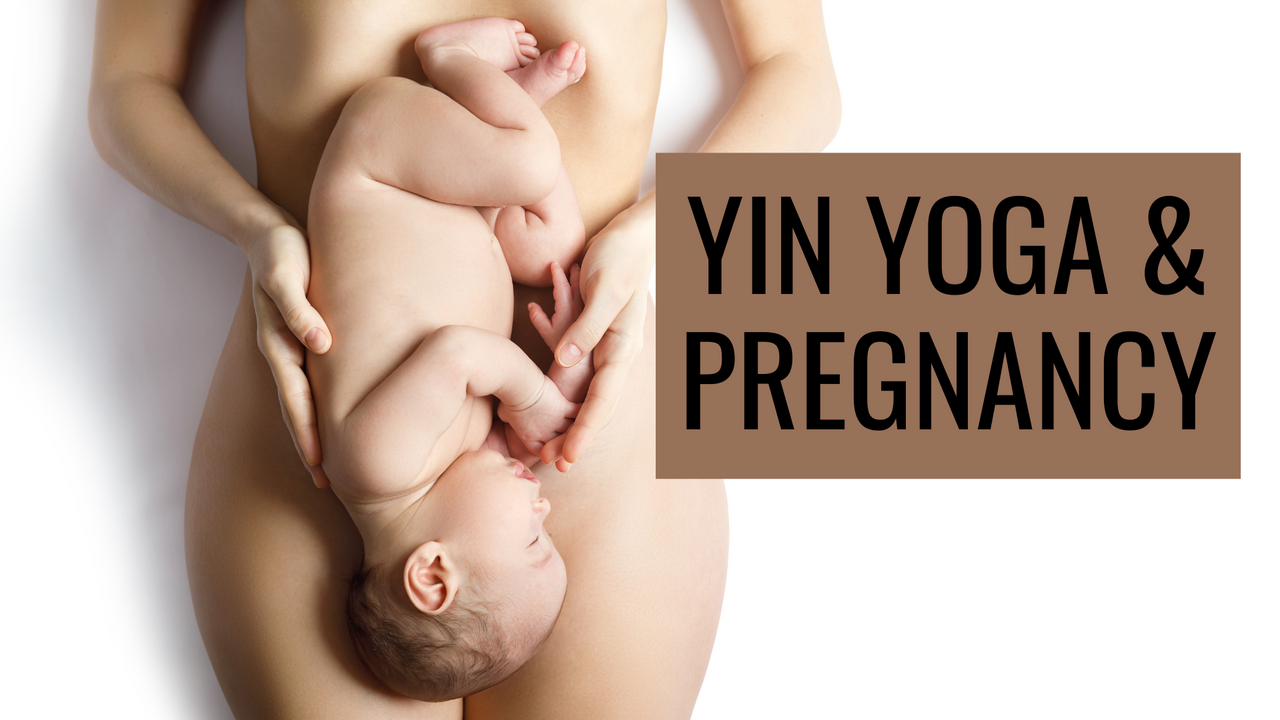Yin Yoga & Pregnancy

Is it safe to do yin yoga when pregnant, or after giving birth?
The answer is related to two main factors: the danger of excessive compression on the baby, and the fact that pregnancy causes the body to produce relaxin – a hormone that helps "relax" a woman's body during late pregnancy in preparation for childbirth.
Because of the presence of relaxin, yin yoga is generally not advised in the weeks before and after pregnancy except very gentle yin yoga. Here's why: When the body is flooded with relaxin, it's easy to go too far when stretching. Deep yin yoga postures might feel great when the ligaments are more relaxed than ever, but unfortunately there is a common tendency for women at this stage of pregnancy to go too far.
Even though it may feel really good to stretch so much more deeply than she is accustomed to, there is a danger in over-doing it. Women can experience cramping and pain in the pelvis, particularly the sacroiliac and hip joints.
The size of a pregnant belly often prevents the mother from going too far into forward bends, twists and hip stretches. But while there may not be much danger to the mother's joints, some prenatal yoga teachers warn that these postures can harm the fetus by placing too much compression on it.
As for backbends, since the belly doesn't hinder this direction of movement, pregnant women may need to take extra care not to go too far into backbends, e.g. saddle pose.
The more dangerous time may be after giving birth, because yin yoga's tendency to expand the body's range of motion may be exactly the opposite of what the body needs during this time of recovery. Postpartum yoga should support the natural processes of the core and pelvic tissues to find more strength and stability. Gentle pilates, walking and gentle postnatal hatha yoga will be better choices than deep yin stretches.
For these reasons, as an alternative to yin yoga, restorative yoga is often recommended before and after birth.
How long should a woman wait after birth before resuming or starting a yin yoga practice? The amount of time that her joints are vulnerable will vary from woman to woman, but often she can feel when her core is ready to return to its former state. If the mother is breastfeeding, her body continues to produce more relaxin, which means it will extend the period she should refrain from stretching deeply.
Another consideration is the exhaustion that many women experience after giving birth. There may be little time to claim for self care after having a baby, and once a new mother gets an hour to spend on the yoga mat, she may tend to go too far.
While movement can be a wonderful way to help the body to come back into balance, moderation is very important. Whether the mother is doing yin, yang, hatha or vinyasa yoga – or another type of exercise – this is not the time to push the limits of her flexibility, strength or stamina.
Patience is advised during this time as body resets itself and establishes a deeper state of physical, emotional and energetic well-being.






